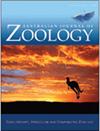雌性的配偶选择影响后代的性别比,但不影响后代的繁殖力
IF 1
4区 生物学
Q3 ZOOLOGY
引用次数: 0
摘要
获得合适的配偶是生殖的一个组成部分,在性选择过程中,如雌性配偶的选择会产生直接和/或间接的利益。在这里,我们研究了嗅觉驱动的雌性配偶选择是否会影响圈养肥尾雀(Sminthopsis crassicaudata)的繁殖成功。尽管雌性花67%的时间与偏好的雄性气味在一起,但生殖成功率不受指定配偶选择的影响。在存活至断奶的10窝(12窝)中,非偏好配对的平均产仔数(3±0.83)高于偏好配对的平均产仔数(1.6±0.60),断奶成功率相等。分析表明,后代的性别比例受到配偶选择的影响,与非首选伴侣配对的雌性相比,与首选伴侣配对的雌性生出更多的女儿(81%),而与非首选伴侣配对的雌性生出更多的儿子(44%),还受到父亲身体状况的影响,与身体状况较好的雄性配对的雌性生出更多的儿子。在这个物种中,改变后代的性别比例有利于女儿,可以通过与偏好的雄性配对来实现,而通过与身体状况较好的雄性配对来实现。随着对圈养繁殖计划的需求日益增加,这些技术可能为纠正性别比例偏差和将自然交配系统纳入保护计划提供机会。本文章由计算机程序翻译,如有差异,请以英文原文为准。
Female mate choice in the fat-tailed dunnart (Sminthopsis crassicaudata) influences offspring sex ratio, but not fecundity
ABSTRACT Obtaining a suitable mate is an integral part of reproduction, with sexual selection processes such as female mate choice resulting in both direct and/or indirect benefits. Here, we investigated whether olfactory driven female mate choice influenced reproductive success in captive fat-tailed dunnarts (Sminthopsis crassicaudata). Although females spent 67% more time with a preferred male’s scent, reproductive success was not influenced by assigned mate choice. Of the 10 (of 12) litters that survived to weaning, average litter size was higher for non-preferred pairings (3 ± 0.83) compared with preferred pairings (1.6 ± 0.60), with weaning success equal for both pairings. Analyses suggested that offspring sex ratios were influenced by mate choice, with females paired with their preferred mate having more daughters (81%) in comparison to non-preferred pairings (44%) and by paternal body condition, whereby females paired with males in better body condition produced more sons. In this species, altering offspring sex ratios in favour of daughters may be achieved by pairing with preferred males, and towards sons by pairing with males in better body condition. With the increasing need for captive breeding programs, these techniques may provide opportunities to correct sex ratio biases and incorporate natural mating systems into conservation programs.
求助全文
通过发布文献求助,成功后即可免费获取论文全文。
去求助
来源期刊
CiteScore
2.40
自引率
0.00%
发文量
12
审稿时长
>12 weeks
期刊介绍:
Australian Journal of Zoology is an international journal publishing contributions on evolutionary, molecular and comparative zoology. The journal focuses on Australasian fauna but also includes high-quality research from any region that has broader practical or theoretical relevance or that demonstrates a conceptual advance to any aspect of zoology. Subject areas include, but are not limited to: anatomy, physiology, molecular biology, genetics, reproductive biology, developmental biology, parasitology, morphology, behaviour, ecology, zoogeography, systematics and evolution.
Australian Journal of Zoology is a valuable resource for professional zoologists, research scientists, resource managers, environmental consultants, students and amateurs interested in any aspect of the scientific study of animals.
Australian Journal of Zoology is published with the endorsement of the Commonwealth Scientific and Industrial Research Organisation (CSIRO) and the Australian Academy of Science.

 求助内容:
求助内容: 应助结果提醒方式:
应助结果提醒方式:


